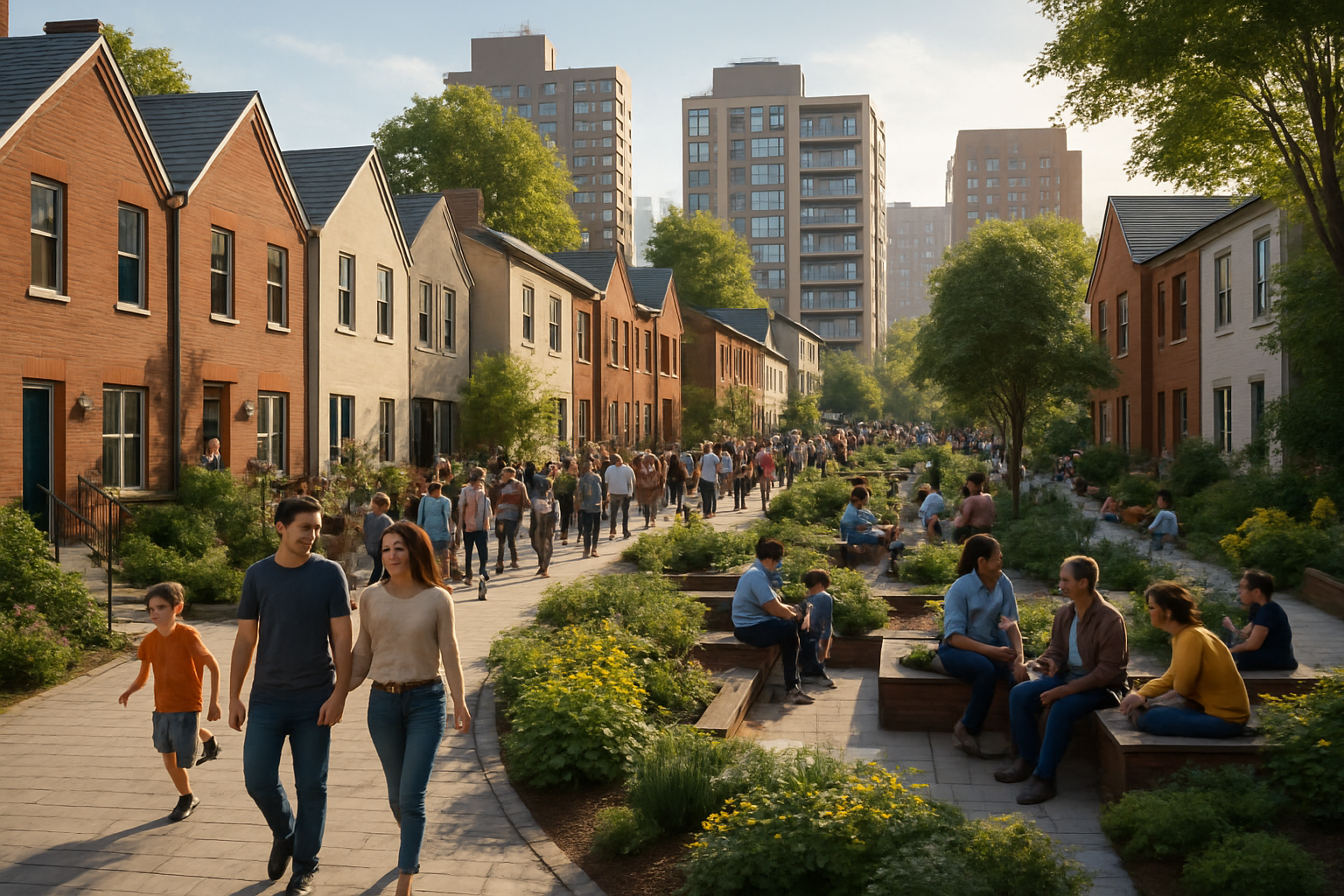Neurourbanism: Designing Cities for Mental Wellbeing
The intersection of neuroscience and urban planning is giving rise to a revolutionary approach in city design. Neurourbanism, a cutting-edge field, explores how our surroundings impact our cognitive processes and emotional states. This innovative perspective is reshaping urban landscapes, prioritizing mental health and wellbeing in the fabric of our cities. Read below to discover how this emerging discipline is transforming urban living and what it means for the future of our communities.

The Genesis of Neurourbanism
The roots of neurourbanism can be traced back to the mid-20th century when researchers began exploring the psychological effects of urban living. However, it wasn’t until recent advancements in neuroscience and brain imaging technologies that the field truly began to take shape. Pioneers in this domain recognized that cities, often designed primarily for efficiency and commerce, were neglecting the fundamental neurological needs of their inhabitants. This realization sparked a movement to integrate neuroscientific principles into urban planning, giving birth to neurourbanism as we know it today.
Cognitive Mapping and Urban Navigation
One of the key focuses of neurourbanism is understanding how humans navigate and mentally map their urban environments. Studies have shown that the hippocampus, a region of the brain crucial for spatial memory, can be significantly affected by the layout of a city. Grid-like street patterns, for instance, have been found to support better spatial cognition compared to more chaotic layouts. Urban planners are now incorporating these findings into their designs, creating cityscapes that are not only more navigable but also support better cognitive function and reduce stress associated with spatial disorientation.
Green Spaces and Mental Restoration
Neurourbanism emphasizes the critical role of green spaces in urban mental health. Research has consistently demonstrated that exposure to nature can lower cortisol levels, reduce symptoms of depression and anxiety, and improve overall cognitive function. As a result, cities are increasingly integrating parks, urban forests, and even vertical gardens into their landscapes. These green oases serve as crucial respite areas, allowing city dwellers to recharge their mental batteries and counteract the cognitive fatigue often associated with urban living.
Social Connectivity and Urban Design
Another pivotal aspect of neurourbanism is its focus on fostering social connections through thoughtful urban design. Studies have shown that social isolation can have severe negative impacts on mental health, comparable to the effects of smoking or obesity. In response, neurourbanists are advocating for the creation of public spaces that encourage social interaction. This includes designing pedestrian-friendly streets, communal areas in residential complexes, and vibrant public squares that serve as natural gathering points for communities.
Sensory Considerations in City Planning
Neurourbanism also takes into account the sensory experiences of urban dwellers. Noise pollution, for example, has been linked to increased stress levels and cognitive impairment. To combat this, cities are implementing sound barriers, quiet zones, and even using specific types of vegetation known to absorb sound. Similarly, lighting design is being re-evaluated, with a focus on supporting natural circadian rhythms and reducing the negative impacts of light pollution on sleep patterns and mental health.
The Future of Neurourbanism
As we look to the future, neurourbanism promises to play an increasingly significant role in shaping our cities. Emerging technologies like virtual and augmented reality are being used to test and refine urban designs before implementation, allowing for more precise optimization of spaces for mental wellbeing. Additionally, the integration of smart city technologies with neurourbanism principles could lead to adaptive urban environments that respond in real-time to the psychological needs of their inhabitants.
In conclusion, neurourbanism represents a paradigm shift in how we conceive and construct our urban spaces. By placing mental health and cognitive wellbeing at the forefront of city planning, this innovative field is paving the way for more livable, sustainable, and psychologically nurturing cities. As research in this area continues to evolve, we can look forward to urban environments that not only house us but actively contribute to our mental flourishing. The cities of tomorrow, shaped by the principles of neurourbanism, promise to be havens of psychological wellbeing amidst the complexities of modern life.




